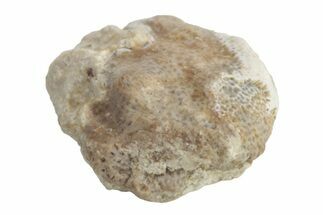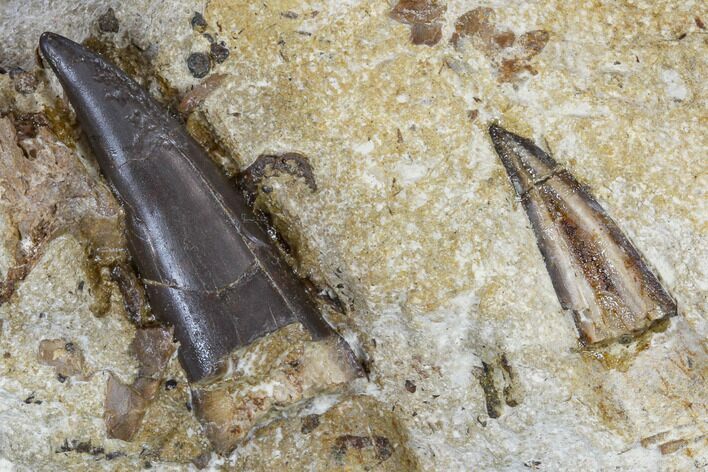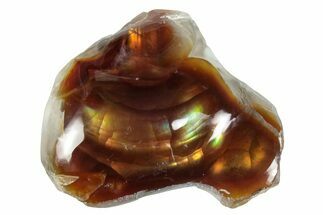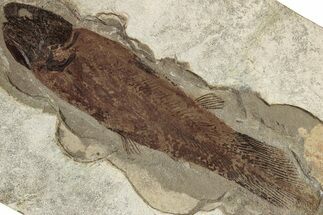This Specimen has been sold.
Two Xiphactinus Teeth In Chalk - Kansas
This is two fossil fish (Xiphactinus) teeth from Kansas. The longest tooth is 1.1" and has a repair. The smaller tooth is .6" and has been broken along the longitudinal axis and the top half is missing. They are attached to the stone they were found in.
Comes with an acrylic stand.
Xiphactinus was a huge predatory fish that lived during the Late Cretaceous. It would have been a voracious predator, growing 15-20 feet long. When alive, the fish would have resembled a gargantuan fanged tarpon. It appeared in the BBC's Sea Monsters and National Geographic's Sea Monsters: A Prehistoric Adventure, and was labelled a "Prehistoric Terror" in the Animal Planet show River Monsters.
Comes with an acrylic stand.
Xiphactinus was a huge predatory fish that lived during the Late Cretaceous. It would have been a voracious predator, growing 15-20 feet long. When alive, the fish would have resembled a gargantuan fanged tarpon. It appeared in the BBC's Sea Monsters and National Geographic's Sea Monsters: A Prehistoric Adventure, and was labelled a "Prehistoric Terror" in the Animal Planet show River Monsters.
The Smoky Hill Chalk Member of the Niobrara Chalk formation is a Cretaceous conservation Lagerstätte, or fossil-rich geological formation, known primarily for its exceptionally well-preserved marine reptiles. It outcrops in parts of northwest Kansas--its most famous localities for fossils--and in southeastern Nebraska. Large, well-known fossils excavated from the Smoky Hill Chalk include marine reptiles such as plesiosaurs, large bony fish such as Xiphactinus, mosasaurs, pterosaurs, and turtles.
SPECIES
Xiphactinus audax
LOCATION
Kansas
FORMATION
Niobrara Formation, Smoky Hill Chalk
SIZE
1.1" longest tooth, .6" smaller, 4.1 x 3.1" rock
CATEGORY
SUB CATEGORY
ITEM
#114574
We guarantee the authenticity of all of our specimens.
 Reviews
Reviews















